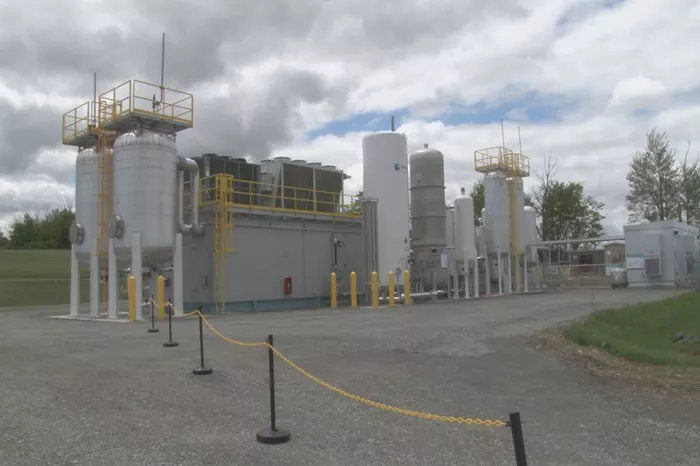Natural gas is a vital component of the global energy landscape. It serves as a cleaner-burning alternative to coal and oil, contributing significantly to electricity generation worldwide. The process of converting natural gas into usable energy involves several stages, each critical to ensuring efficiency and minimizing environmental impact. This article explores how natural gas is transformed into energy, detailing the extraction, conversion, and distribution processes, along with the technology and methodologies involved.
Importance of Natural Gas
Natural gas accounts for approximately 23% of the world’s electricity generation, making it the second-largest source after coal. Its significance is further underscored by its role as a transitional fuel in the shift towards renewable energy sources. As countries aim to reduce carbon emissions, natural gas provides a reliable backup for intermittent renewable sources like wind and solar power127.
Overview of the Conversion Process
The conversion of natural gas into energy typically follows three main steps: extraction, conversion, and power distribution. Each step involves specific technologies and methodologies that enhance efficiency and reduce emissions.
Extraction of Natural Gas
Sources of Natural Gas
Natural gas is primarily found in underground rock formations or associated with other fossil fuels. It is mainly composed of methane (CH4), but can also contain ethane, propane, and other hydrocarbons. The extraction process involves drilling wells into these formations to access the gas26.
Processing Natural Gas
Once extracted, natural gas undergoes processing to remove impurities such as water vapor, carbon dioxide, hydrogen sulfide, and other contaminants. This is crucial for ensuring that the gas meets quality standards for transportation and combustion. The processed gas is then transported via pipelines to power plants or storage facilities63.
Conversion of Natural Gas to Electricity
Combustion Turbines
The primary method for converting natural gas into electricity involves combustion turbines. In this process:
Combustion: Pressurized natural gas is mixed with air and ignited in a combustion chamber.
Turbine Operation: The resulting hot gases expand rapidly, turning the blades of a turbine connected to a generator.
Electromagnetic Induction: As the turbine spins, it drives a generator that produces electricity through electromagnetic induction34.
This method can be implemented in two configurations: simple cycle and combined cycle.
Simple Cycle Gas Plants
In simple cycle plants, the combustion turbine operates independently to generate electricity. While these plants are less efficient—typically achieving thermal efficiencies around 33%—they can quickly ramp up production to meet peak electricity demands41.
Combined Cycle Gas Plants
Combined cycle plants enhance efficiency by utilizing waste heat from the combustion process. After passing through the turbine, exhaust gases are directed to a heat recovery steam generator (HRSG), where they produce steam that drives a second turbine:
Efficiency Gains: Combined cycle systems can achieve thermal efficiencies between 50% to 60%, significantly reducing fuel consumption and emissions compared to simple cycle plants24.
Waste Heat Utilization: This system not only generates additional electricity but also minimizes waste heat that would otherwise be released into the atmosphere1.
Other Conversion Technologies
In addition to turbines, natural gas can also be converted into electricity using:
Boilers: In some power plants, natural gas is burned in a boiler to produce steam that spins turbines.
Fuel Cells: These devices convert chemical energy directly into electrical energy through electrochemical reactions, offering high efficiency and low emissions63.
Power Distribution
Transmission of Electricity
Once generated, electricity is transmitted through high-voltage power lines to minimize losses over long distances. Transformers increase voltage levels for efficient transmission before reducing them again for safe distribution to homes and businesses36.
Role in Energy Systems
Natural gas plays a crucial role in stabilizing energy systems due to its ability to quickly adjust output levels in response to fluctuating demand:
Backup for Renewables: As renewable energy sources like wind and solar are intermittent, natural gas-fired plants can provide backup power when these sources are unavailable27.
Flexibility: Gas-fired power plants can be turned on or off rapidly compared to coal or nuclear plants, making them ideal for meeting peak demand periods14.
Environmental Considerations
Emissions Profile
While natural gas burns cleaner than coal or oil—producing fewer pollutants such as sulfur oxides (SOx) and particulate matter—it still contributes to greenhouse gas emissions:
Carbon Dioxide Emissions: Natural gas combustion produces about half as much CO2 as coal per unit of energy produced34.
Methane Leakage: Methane is a potent greenhouse gas with a higher global warming potential than CO2. Addressing methane leaks during extraction and transportation is critical for minimizing environmental impact76.
Transitioning Towards Sustainability
Natural gas is often viewed as a bridge fuel in the transition towards more sustainable energy systems. Its lower emissions profile compared to other fossil fuels makes it an attractive option while renewable technologies continue to develop:
Carbon Capture Technologies: Innovations in carbon capture and storage (CCS) are being explored to further reduce emissions from natural gas power plants7.
Integration with Renewables: The ability of natural gas plants to complement renewable sources enhances grid reliability as more renewables are integrated into energy systems21.
Conclusion
The conversion of natural gas into energy is a complex yet essential process that underpins modern electricity generation. Understanding each step—from extraction through conversion to distribution—highlights the critical role that natural gas plays in our energy landscape. As we strive towards cleaner energy solutions, optimizing this process will be crucial in balancing economic needs with environmental responsibilities.
Natural gas will continue to be an integral part of our energy mix as we transition towards more sustainable sources while addressing climate change challenges effectively.
Related topic:
How Long Will Natural Gas Last With Stabilizer?

